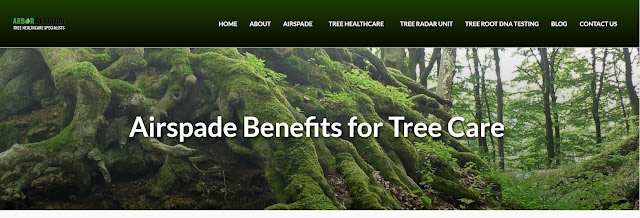The Role of Airspade in Preventing Soil Compaction and Erosion
Soil compaction and erosion pose significant threats to the health of trees and the stability of landscapes. In the battle against these challenges, the Airspade emerges as a powerful ally, offering effective solutions that promote soil health and environmental sustainability. This article delves into the role of Airspade in preventing soil compaction and erosion, highlighting its benefits of airspade in preserving the vitality of our ecosystems.
Understanding Soil Compaction and Erosion
Soil Compaction
Soil compaction occurs when soil particles are pressed together, reducing pore space and restricting the movement of air, water, and nutrients. Compacted soil hinders root growth, decreases water infiltration, and impairs soil fertility, ultimately compromising the health of plants and trees.
Soil Erosion
Soil erosion refers to the process by which soil is displaced or removed by wind, water, or human activity. Erosion can result in the loss of topsoil, which contains essential nutrients for plant growth, and lead to land degradation, decreased water quality, and habitat destruction.
The Airspade Solution
Non-Invasive Soil Aeration
One of the primary functions of the Airspade is soil aeration. By delivering high-velocity, compressed air to the soil, the Airspade effectively loosens compacted soil without causing damage to roots or disturbing the soil structure. This non-invasive approach promotes root growth, improves soil structure, and enhances water infiltration, mitigating the effects of compaction.
Soil Decompaction
In addition to aerating soil, the Airspade can be used to decompact soil in areas where heavy machinery is impractical or detrimental. By gently breaking up compacted layers, the Airspade restores soil porosity, allowing roots to penetrate deeper and access essential nutrients and moisture. This process revitalizes the soil, creating a conducive environment for plant growth and ecosystem resilience.
Erosion Control
To combat soil erosion, the Airspade offers precise control over soil displacement. Unlike traditional methods that may exacerbate erosion, such as bulldozing or excavation, the Airspade allows for targeted erosion control measures. Arborists and landscapers can use the Airspade to stabilize soil around trees and slopes, install erosion control barriers, and revegetate vulnerable areas, effectively mitigating the risk of erosion and preserving soil integrity.
Real-World Applications
Urban Landscapes
In urban environments where soil compaction and erosion are prevalent due to construction activities and heavy foot traffic, the Airspade plays a vital role in maintaining green spaces. Arborists use the Airspade to rejuvenate compacted soil in parks, gardens, and urban forests, ensuring the long-term health and vitality of urban trees and landscapes.
Construction Sites
On construction sites, where soil disturbance and compaction are inevitable, the Airspade offers a proactive approach to soil management. Arborists can use the Airspade to protect existing trees by aerating compacted soil, preventing damage to roots, and minimizing soil erosion during construction activities.
Restoration Projects
In ecological restoration projects, the Airspade is employed to rehabilitate degraded landscapes and promote native plant establishment. By addressing soil compaction and erosion, the Airspade facilitates the recovery of ecosystems, enhances biodiversity, and creates resilient habitats for wildlife.
Conclusion
The Airspade plays a crucial role in preventing soil compaction and erosion, offering innovative solutions that promote soil health and environmental sustainability. Through non-invasive soil aeration, decompaction, and erosion control measures, the Airspade empowers arborists and landscapers to preserve the integrity of landscapes, protect trees, and safeguard ecosystems for future generations.




Comments
Post a Comment